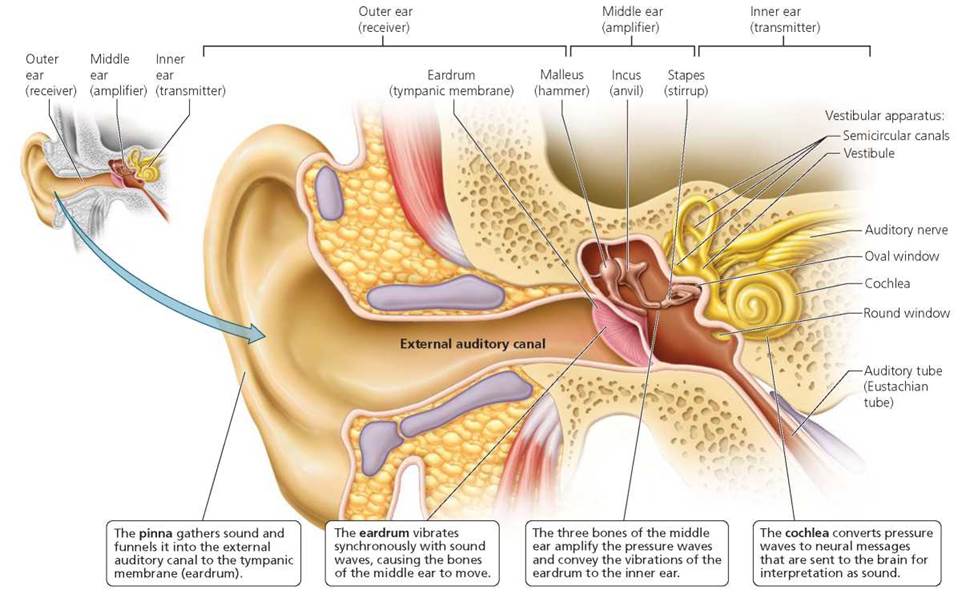Sound is a mechanical vibration that travels through a medium, such as air or water. When it is picked up by our ears, the vibration is converted into electro-chemical signals that our brain processes and interprets. Any source of sound produces this vibration via certain mechanism. For example, a drum produces sound via a vibrating membrane. Humans can hear sound waves with frequencies between about 20 Hz and 20 kHz, while other animals have different hearing ranges. The higher the frequency, the higher the pitch.
 Figure from http://schoolbag.info/biology/humans/11.html
Figure from http://schoolbag.info/biology/humans/11.html
The human ear has three main parts: the outer, middle and inner ears. The outer ear opens into the ear canal. The eardrum (tympanic membrane) separates the ear canal from the middle ear. The middle ear contains three tiny bones which amplify and transfer sound wave to the inner ear. These three bones, or ossicles, are called the malleus, the incus, and the stapes (also referred to as the hammer, the anvil, and the stirrup, respectively). The inner ear contains the cochlea which converts sound into neurological signals and the auditory (hearing) nerve, which transfers sound to the brain.
Watch this Youtube video for details of the whole process.
